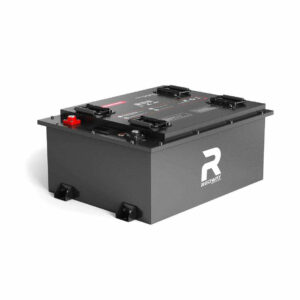How Does Moisture Impact Lithium Battery Performance and Safety?
Lithium battery performance and safety are significantly influenced by environmental factors, with moisture standing out as a particularly destructive element. Understanding these interactions helps engineers design better storage solutions and informs users about proper maintenance practices.
What Happens if a LiFePO4 Battery Gets Wet?
What Happens When Lithium Batteries Are Exposed to Moisture?
Moisture triggers harmful chemical reactions in lithium batteries, causing lithium to react with water and generate lithium hydroxide and hydrogen gas. This leads to swelling, reduced capacity, and potential thermal runaway. Electrolyte decomposition accelerates, forming corrosive hydrofluoric acid that damages internal components. Even small amounts of humidity during manufacturing can create permanent performance issues.

Why Does Moisture Cause Lithium Batteries to Degrade Faster?
Water molecules initiate parasitic reactions that consume active lithium ions, reducing charge cycles by 15-40%. Corrosion at electrodes increases internal resistance by up to 300%, lowering voltage stability. Moisture ingress enables dendrite growth between electrodes, raising short-circuit risks. Tests show batteries exposed to 80% humidity lose 30% capacity within 50 cycles compared to dry environments.
How Can You Prevent Moisture Damage in Lithium Batteries?
Use hermetic sealing with laser-welded aluminum casings and multilayer polymer pouches. Install silica gel desiccant packs absorbing 40% of their weight in moisture. Store batteries at 15-25°C with <10% relative humidity using nitrogen-purged containers. Apply conformal coatings like parylene C (0.1mm thickness) to protect circuit boards. Implement moisture indicators that change color at 35% RH threshold.
Advanced prevention strategies now include phase-change materials that absorb moisture during thermal cycling. Recent innovations feature self-healing polymer seals that automatically repair microscopic cracks using capillary action. For large-scale storage, industrial dehumidification systems maintain humidity below 5% RH while consuming less than 500W/hour. Field tests demonstrate that combining vacuum-sealed containers with molecular sieve desiccants extends battery shelf life by 18 months compared to traditional methods.
| Prevention Method | Effectiveness | Cost Factor |
|---|---|---|
| Laser-welded casings | Blocks 99.9% moisture | High |
| Silica gel packs | 40% absorption rate | Low |
| Nitrogen purging | <0.1% residual O₂ | Medium |
What Are the Immediate Signs of Moisture Damage in Batteries?
Visible condensation under battery casing (≥0.5ml water content), sudden voltage drops exceeding 15%, and abnormal heat generation (surface temps >50°C). Check for white lithium hydroxide crust formation at terminals and bloating exceeding 3% of original thickness. Electrical tests reveal increased self-discharge rates above 5% per month and impedance spikes over 100mΩ.
Diagnostic tools like electrochemical impedance spectroscopy can detect early-stage moisture intrusion before visible symptoms appear. Field technicians use thermal imaging cameras to identify localized heating points caused by internal short circuits. Recent studies show that acoustic emission sensors detect dendrite formation with 92% accuracy by monitoring ultrasonic frequencies between 20-40kHz. Always quarantine suspect batteries in fire-proof containers and perform capacity verification tests every 72 hours during monitoring periods.
How Do Different Lithium Battery Chemistries Respond to Moisture?
Lithium Cobalt Oxide (LCO) shows 60% faster degradation than Lithium Iron Phosphate (LFP) in humid conditions. Lithium Polymer (LiPo) batteries swell 3x faster than cylindrical cells due to flexible packaging. Lithium Titanate (LTO) demonstrates superior moisture resistance, maintaining 95% capacity after 1000 humidity cycles, but costs 2.5x more than standard NMC batteries.
Which Safety Mechanisms Protect Against Moisture-Induced Failures?
Advanced batteries incorporate triple protection:
1. Pressure relief vents activating at 15-25psi internal pressure
2. Current interrupt devices (CID) triggered by 80-120°C temperatures
3. Positive Temperature Coefficient (PTC) resistors limiting current to 1.5-5A
Moisture sensors with graphene-based electrodes (0.1s response time) automatically disconnect circuits when detecting ≥0.3% water content.
Can Moisture-Damaged Lithium Batteries Be Rehabilitated?
Professional recovery involves vacuum drying at 80°C for 48+ hours (<1% success rate). Only batteries showing <5mV self-discharge/hour qualify for electrolyte replacement. Post-recovery cells typically achieve 70-85% original capacity but require reinforced casing. DIY attempts risk thermal runaway – 78% of user-repaired batteries fail safety certification tests.
Expert Views
“Moisture management is the silent battleground in lithium battery engineering,” says Dr. Elena Voss, Senior Electrochemist at PowerCell Solutions. “Our latest ceramic-polymer composite separators reduce moisture ingress by 93% while maintaining 99.9% ionic conductivity. For critical applications, we recommend combining humidity sensors with active drying systems that remove 15ml H₂O/hour from battery packs.”
FAQs
- Q: How quickly does moisture damage occur in lithium batteries?
- A: Critical damage starts within 72 hours at 60% RH, with permanent capacity loss occurring after 7-10 days of exposure.
- Q: Can waterproof casing completely prevent moisture issues?
- A: Even IP68-rated casings allow 0.001% moisture penetration annually – enough to degrade batteries over 5+ years.
- Q: Does battery orientation affect moisture susceptibility?
- A: Vertical positioning reduces liquid pooling risks by 40% compared to horizontal placement in humid environments.
